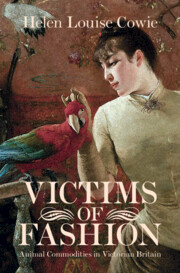Book contents
3 - Is the Elephant Following the Dodo?
Published online by Cambridge University Press: 29 October 2021
Summary
Chapter 3 examines one of the most high-profile and widely used animal products of the Victorian era: ivory. Employed to make all manner of consumer goods, ivory was heavily sought after in the nineteenth century and was worked on an industrial scale. In the early nineteenth century, much of the ivory consumed in Europe came from historical stockpiles, gathered over centuries by African societies and purchased – or more often seized – by Arab traders for sale on the international market. By the 1870s and 1880s, however, these stockpiles had been exhausted, and elephants began to be slaughtered in large numbers for their tusks – with devastating consequences for the species. The chapter explores the complex networks that brought ivory from the African savannah to the cutlers of Sheffield and piano-makers of London and considers the severe environmental impact of the ever increasing demand for ivory. It goes on to examine the measures taken to protect the African elephant, which ranged from hunting licences and game reservations to export bans on underweight tusks. The final part of the chapter assesses various schemes to domesticate the African elephant, converting it from a supplier of ivory to a beast of burden.
Keywords
- Type
- Chapter
- Information
- Victims of Fashion , pp. 87 - 125Publisher: Cambridge University PressPrint publication year: 2021



